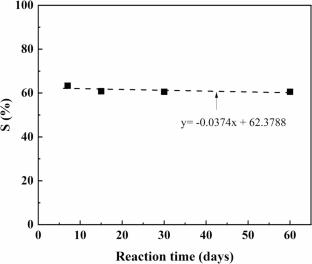An experimental study on the montmorillonite illitization process in Na-Gaomiaozi bentonite for Chinese EBS
Abstract
Na-Gaomiaozi (GMZ) bentonite has been selected as the buffer material in the Chinese engineering barrier structure (EBS) for nuclear waste disposal. In order to investigated the illitization process of montmorillonite in Na-GMZ bentonite, hydrothermal tests were conducted considering different concentrations of K+, reaction temperatures and times. The mineralogical and colloidal properties of the reacted soil were characterized by X-ray diffraction and zeta potential tests, respectively. The ion concentration of supernatant solution was determined by inductively coupled plasma-optimal emission spectrometer (ICP-OES). The results showed that the presence of K+ promotes the illitization of montmorillonite, and the proportion of illite layers increase with the increasing of K+. Both elevated temperature and time accelerate the illitization of montmorillonite. During the illitization, Si was released from the tetrahedral sheets of montmorillonite. An assessment model of swelling pressure during the illitization of compacted Na-GMZ bentonite is proposed, and the calculated results showing good agreement with experimental data under different K+ concentrations from the literature. This work provides a valuable approach for the phase transformation evaluation of the buffer material in Chinese EBS.


 求助内容:
求助内容: 应助结果提醒方式:
应助结果提醒方式:


